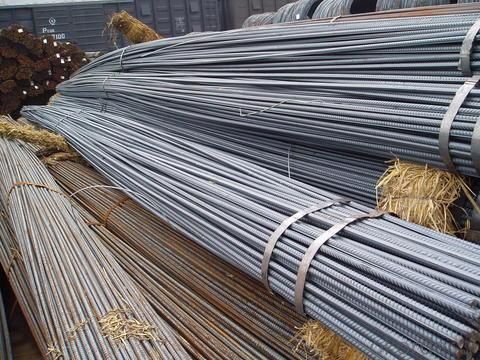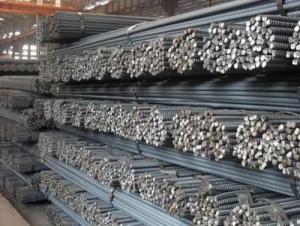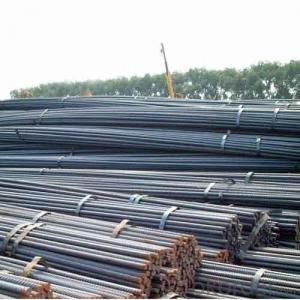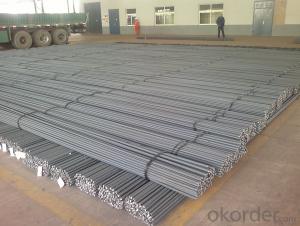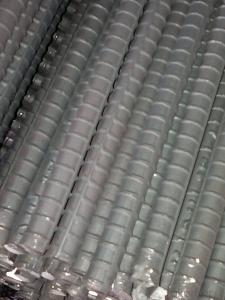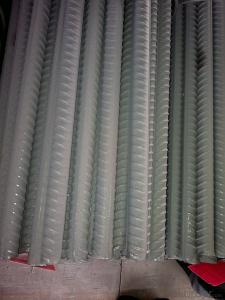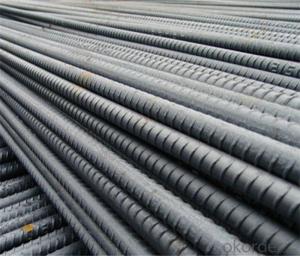Deformed Bar / Reinforcing Steel Bar with Different Function
- Loading Port:
- Tianjin
- Payment Terms:
- TT or LC
- Min Order Qty:
- 27 m.t.
- Supply Capability:
- 20000 m.t./month
OKorder Service Pledge
OKorder Financial Service
You Might Also Like
Product Description of Deformed Bar / Reinforcing Steel Bar with Different Function:
1. Length: 6m-12m as standard.
2. Reputation first, best competitive price, high quality, quotes price promptly and confirm the delivery on time!
3. Application : Used for housing construction.
4. PRICE: Keep lower operating costs so as to offer competitive price for our clients.
5. Minimum Order Quantity: 300 MTS as per size.
6. Invoicing: Actual or Theoretical Weight Basis as buyer’s request.
7. Payment terms: TT payment in advance or irrevocable LC at sight.
8. Delivery time: 25-30 days after we receive your TT payment at sight
.Product Applications of Deformed Bar / Reinforcing Steel Bar with Different Function:
Deformed Bar / Reinforcing Steel Bar with Different Function are ideal for structural applications and are widely used in construction and manufacturing. Carbon steel wire rod is mainly used for reinforcement of reinforced concrete and welded structure or reprocessed (roberts , nail, etc.) materials, especially used to produce wire drawing, welding electrode, nails, spring, electronic, precise machinery parts and so on.
Product Advantages of Deformed Bar / Reinforcing Steel Bar with Different Function:
OKorder's Deformed Bar / Reinforcing Steel Bar with Different Function are durable, strong, and wide variety of sizes. They are newly produced by good quality steel billets.
Main Product Features of Deformed Bar / Reinforcing Steel Bar with Different Function:
· Premium quality
· Prompt delivery & seaworthy packing (30 days after receiving deposit)
· Can be recycled and reused
· Mill test certification
· Professional Service
· Competitive pricing
Product Specifications of Deformed Bar / Reinforcing Steel Bar with Different Function:
Steel Grade: SAE1006-1018B
Standard: ASTM, GB
Diameter: 5.5mm, 6.5mm, 7mm,8mm,9mm,10mm,12mm,14mm
Type: in coil, coil weight around 2MT
Alloy or Not: Alloy
Technique: Hot Rolled
Place of Origin: China Mainland
Surface: round, no twisted, light and smooth
FAQ:
Q1: Why buy Hot Rolled Low Carbon Steel Wire Rods for Nails, Steel Wire Mesh from OKorder.com?
A1: All products offered byOKorder.com are carefully selected from China's most reliable manufacturing enterprises. Through its ISO certifications, OKorder.com adheres to the highest standards and a commitment to supply chain safety and customer satisfaction.
Q2: How do we guarantee the quality of our products?
A2: We have established an advanced quality management system which conducts strict quality tests at every step, from raw materials to the final product. At the same time, we provide extensive follow-up service assurances as required.
Q3: How soon can we receive the product after purchase?
A3: Within three days of placing an order, we will arrange production. The normal sizes with the normal grade can be produced within one month. The specific shipping date is dependent upon international and government factors, the delivery to international main port about 45-60days.
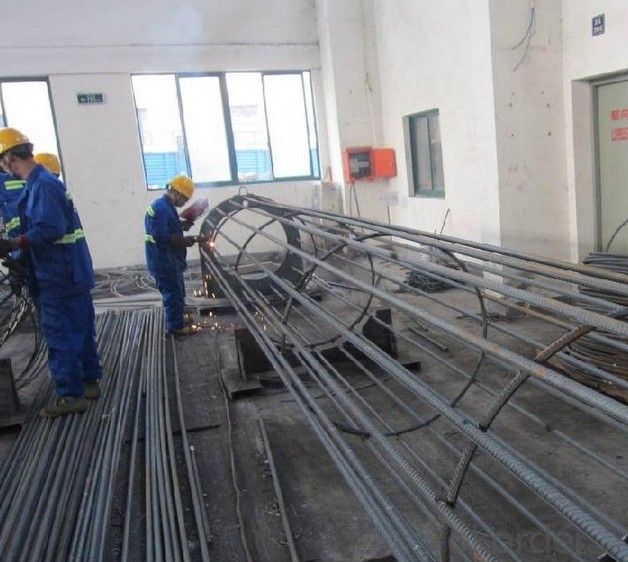
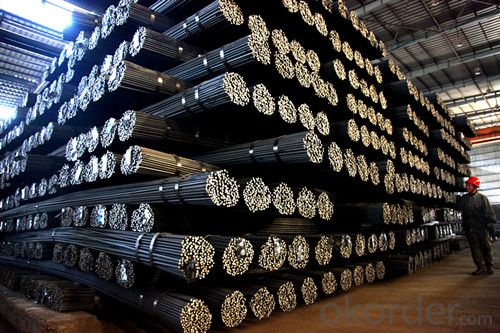

- Q: What is the difference between three - grade steel and two - grade steel?
- Three grade thread steel HRB400, two grade thread steel HRB335, now the thread steel is inside the building must be less, then three grade screw steel and two grade thread steel is mainly used for what aspect, in order to solve this problem.
- Q: How do steel rebars affect the durability of concrete in freeze-thaw cycles?
- Steel rebars can significantly improve the durability of concrete in freeze-thaw cycles. Due to their high tensile strength and ability to resist corrosion, rebars enhance the structural integrity of concrete by providing reinforcement and preventing cracking. By effectively distributing the tensile stresses caused by freeze-thaw cycles, steel rebars help to maintain the overall stability and longevity of the concrete structure.
- Q: What is the impact of steel rebars on the overall durability of a structure?
- Steel rebars have a significant impact on the overall durability of a structure. These reinforced steel bars enhance the structural integrity by providing tensile strength and resisting the forces that can cause cracking or failure. By reinforcing concrete, steel rebars increase the structure's ability to withstand external pressures, such as heavy loads, seismic activity, or weather conditions. This reinforcement ensures long-term durability, stability, and structural soundness, making steel rebars crucial for constructing resilient and long-lasting buildings and infrastructure.
- Q: How do steel rebars affect the thermal conductivity of concrete structures?
- Steel rebars have a significant impact on the thermal conductivity of concrete structures. The inclusion of steel rebars in concrete increases the overall thermal conductivity of the structure. This is because steel has a much higher thermal conductivity than concrete. Consequently, heat transfer through the concrete is facilitated by the presence of steel rebars, leading to a higher overall thermal conductivity of the structure.
- Q: Can steel rebars be used in marine structures?
- Yes, steel rebars can be used in marine structures. Steel is a commonly used material in marine construction due to its strength, durability, and resistance to corrosion. However, it is important to use the appropriate type of steel rebars that are specifically designed for marine applications. These rebars are usually made of stainless steel or galvanized steel, which have enhanced corrosion resistance properties compared to regular carbon steel rebars. Additionally, an extra layer of protection such as epoxy coating or cathodic protection systems can be applied to further increase the rebars' resistance to corrosion in harsh marine environments. Regular maintenance and monitoring are also essential to ensure the long-term performance and integrity of steel rebars in marine structures.
- Q: How do steel rebars affect the overall construction cost?
- Steel rebars can significantly affect the overall construction cost. While they are essential for reinforcing concrete structures and ensuring their strength and durability, the cost of steel rebars can be quite high. The quantity, size, and quality of rebars required for a project can directly impact the construction budget. Additionally, transportation, handling, and installation costs of steel rebars should also be considered. However, the long-term benefits of using steel rebars, such as increased structural integrity and reduced maintenance costs, often outweigh the initial expenses.
- Q: Can steel rebars be used in retaining walls and dams?
- Yes, steel rebars can be used in retaining walls and dams. Steel rebars provide reinforcement and strength to these structures, helping to resist lateral forces and prevent cracking or failure. The use of steel rebars ensures the structural integrity and long-term stability of retaining walls and dams.
- Q: What are the guidelines for proper storage and transportation of steel rebars?
- The guidelines for proper storage and transportation of steel rebars include keeping them off the ground to avoid moisture and corrosion, storing them in a well-ventilated area, organizing them in a neat and stable manner to prevent falling or shifting, protecting them from direct exposure to weather conditions, and securing them properly during transportation to avoid damage or accidents.
- Q: What is the role of steel rebars in minimizing the risk of progressive collapse?
- Steel rebars play a crucial role in minimizing the risk of progressive collapse in structures. Progressive collapse refers to the failure of a building or structure due to the localized failure of a primary structural element, which then leads to the failure of adjacent elements and a collapse of the entire structure. The primary function of steel rebars in this context is to enhance the structural integrity and provide strength to critical load-bearing elements, such as columns, beams, and slabs. By reinforcing these elements with steel rebars, the structure becomes more resistant to sudden and catastrophic failures. Steel rebars are typically embedded within the concrete, forming a composite structure known as reinforced concrete. The rebars act as tensile reinforcements, counteracting the concrete's weakness in tension. When subjected to loads, the rebars bear the tension forces while the concrete resists compression forces. This combination allows for a more balanced load distribution and prevents localized failures. In the event of an unexpected failure or an extreme event, such as an explosion or impact, steel rebars play a critical role in preventing progressive collapse. They provide additional ductility and redundancy to the structure, ensuring that even if one element fails, the load can be redistributed to surrounding elements, preventing a domino effect of failure. Moreover, steel rebars contribute to the overall stability of a structure by increasing its load-carrying capacity. By reinforcing structural elements, they allow for increased spans and higher design loads, reducing the risk of overloading and potential failure. Regular inspections and maintenance of steel rebars are essential to ensure their effectiveness in minimizing the risk of progressive collapse. These inspections involve checking for corrosion, proper placement, and adequate cover of the rebars to protect them from environmental factors that may compromise their integrity. In conclusion, steel rebars play a vital role in minimizing the risk of progressive collapse by reinforcing critical load-bearing elements, enhancing structural integrity, and providing redundancy. They enable structures to withstand unexpected failures and extreme events, ensuring the safety and stability of buildings and infrastructure.
- Q: What is the minimum yield strength of steel rebars?
- The minimum yield strength of steel rebars typically varies depending on the type and grade of steel being used. However, in general, the minimum yield strength of steel rebars is commonly around 400 megapascals (MPa) or 58,000 pounds per square inch (psi).
Send your message to us
Deformed Bar / Reinforcing Steel Bar with Different Function
- Loading Port:
- Tianjin
- Payment Terms:
- TT or LC
- Min Order Qty:
- 27 m.t.
- Supply Capability:
- 20000 m.t./month
OKorder Service Pledge
OKorder Financial Service
Similar products
Hot products
Hot Searches
Related keywords



